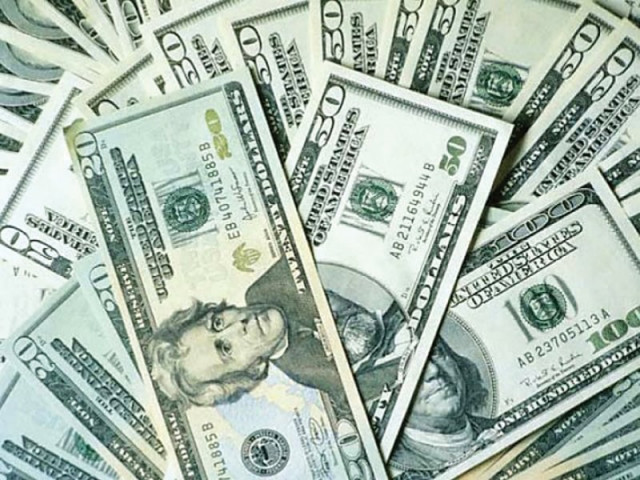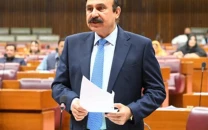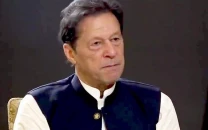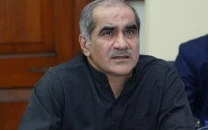SBP borrows $3.93b to bolster forex reserves
Debt servicing and CPEC-related imports prompted the move

PHOTO: FILE
The act of the central bank is in violation of the terms and conditions agreed with the International Monetary Fund (IMF) under the $6.2 billion Extended Fund Facility three-and-a-half-year ago. However, the agreement had expired in September 2016 paving the way for the central bank to avail the loan.
The aggregate short position in forward and future contracts has alarmingly increased to $3.925 billion as of end March this year, revealed official data of the State Bank of Pakistan (SBP).
The $3.925 billion loan is part of the $16 billion reserves held by the SBP that are currently under pressure due to growing obligations of debt servicing and imports of heavy machinery under the China-Pakistan Economic Corridor (CPEC).
More than half of these short-term borrowings are only for one month and the remaining loans have been obtained for two to three months, according to the SBP data.
In absolute terms, $2.1 billion has been borrowed for one month and $1.825 billion for two to three months. The short-term loan has been obtained from the market, predominately from commercial banks that hold $5.1 billion of their depositors.
The $3.93 billion forward position has raised the issue of double-counting of the foreign currency reserves, said former economic adviser to the Ministry of Finance Dr Ashfaque Hasan Khan.
SBP governor’s term ends, but he may get a 3-year extension
Pakistan’s total foreign currency reserves, including $5.1 billion of the commercial banks, stood at $21.1 billion as of April 21, according to SBP. The SBP borrowed $3.925 billion from commercial banks bringing down the net total reserves to $17.185 billion.
And if the borrowings are excluded from the central bank’s reserves, then official foreign currency reserves that are largely built by borrowing from various sources would stand at $12.12 billion.
The SBP spokesman had been requested to respond to the questions of the source of borrowings, the interest that the central bank was paying on these borrowings and its implications on Pakistan’s economy.
However, SBP chief spokesman Abid Qamar did not respond till the filing of the story.
The previous PPP government was also following a similar policy of short-term borrowings from the market to cushion the reserves but then the IMF put a full stop to it, terming it a ‘flawed strategy’. However, during the PPP’s tenure short-term borrowings were only half of the current level.
As of June 2013, the short-term forward contracts amounted to only $2.25 billion that also included currency swaps with friendly countries, according to IMF’s September 2013 report. During the three-year programme period, the IMF had imposed a quantitative criterion to limit these short-term borrowings at $1.75 billion.
The forward position stood at $1.985 billion by June 2016, which has now almost doubled in a span of just nine months.
SBP develops ‘universal’ mobile phone app for financial transactions
The loans have been taken following steep reduction in the official foreign currency reserves after expiry of the IMF programme. Excluding the impact of these short-term borrowings, Pakistan’s official reserves have depleted $2.4 billion since September last year.
IMF objections
A September 2013 report of the IMF had termed the central bank’s strategy to ‘top up’ foreign currency reserves levels as a ‘flawed strategy’. The global lender had expressed concern over the SBP’s heavy reliance on short-term currency swap agreements and forward contracts to boost gross reserves. It had told the Pakistan authorities that these arrangements exposed the country to risks.
After that Pakistan had agreed to gradually reduce the SBP’s short-term currency swap and forward foreign exchange positions to more sustainable levels.
Sources said heavy reliance on short-term borrowings could also bring the rupee exchange rate under pressure, which has somehow retained stability in the past. This has also put a question mark over claims of achieving historical-ever foreign currency reserves.
It is not only the central bank that is resorting to such borrowings, as the federal government is also implementing a similar strategy. The federal government has also borrowed over $3.0 billion from foreign commercial banks to support balance of payments.
The country’s external sector is currently under pressure due to exponential increase in trade deficit on back of declining exports and double-digit growth in imports. Pakistan’s trade deficit widened to $23.3 billion in just nine months.
Sources said the IMF was also looking into the matter.



















COMMENTS
Comments are moderated and generally will be posted if they are on-topic and not abusive.
For more information, please see our Comments FAQ